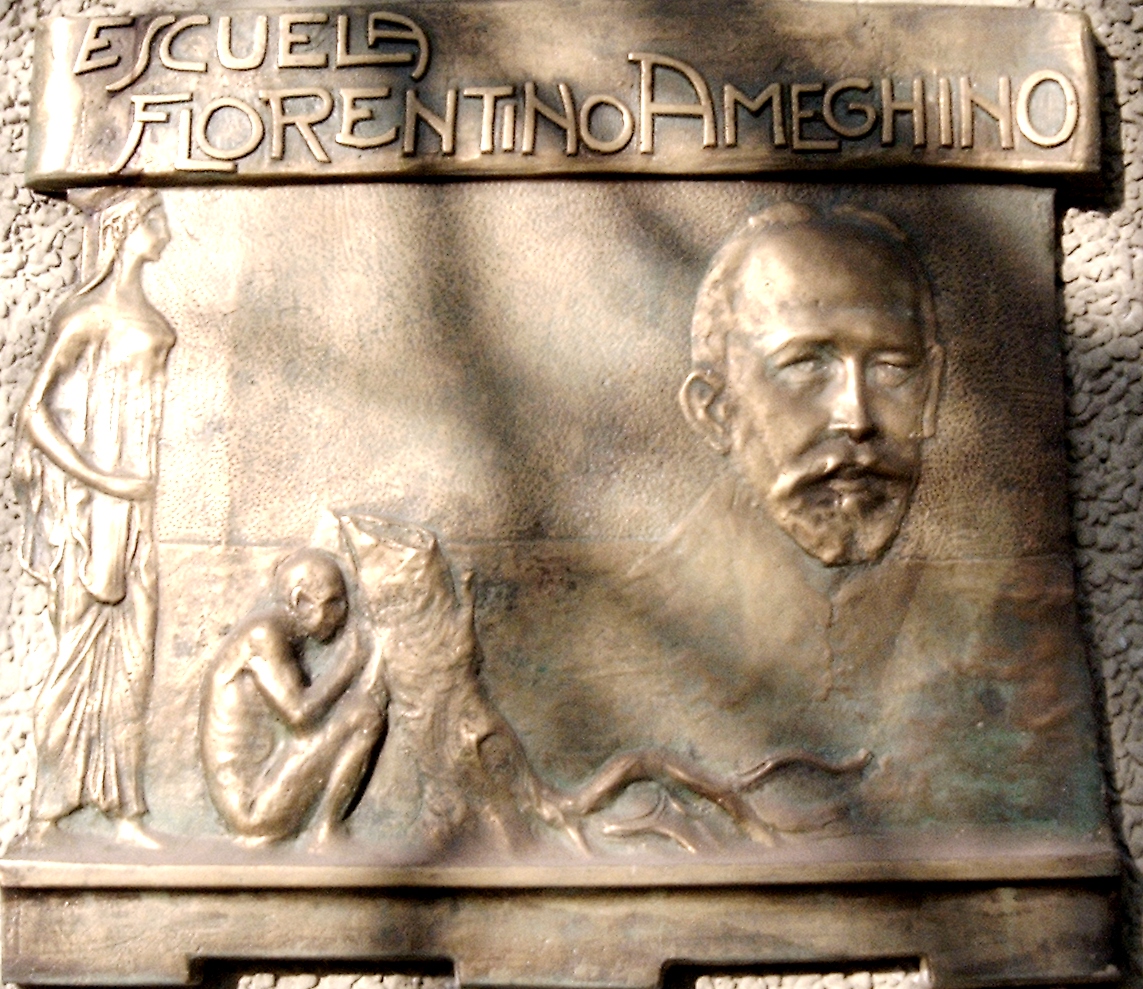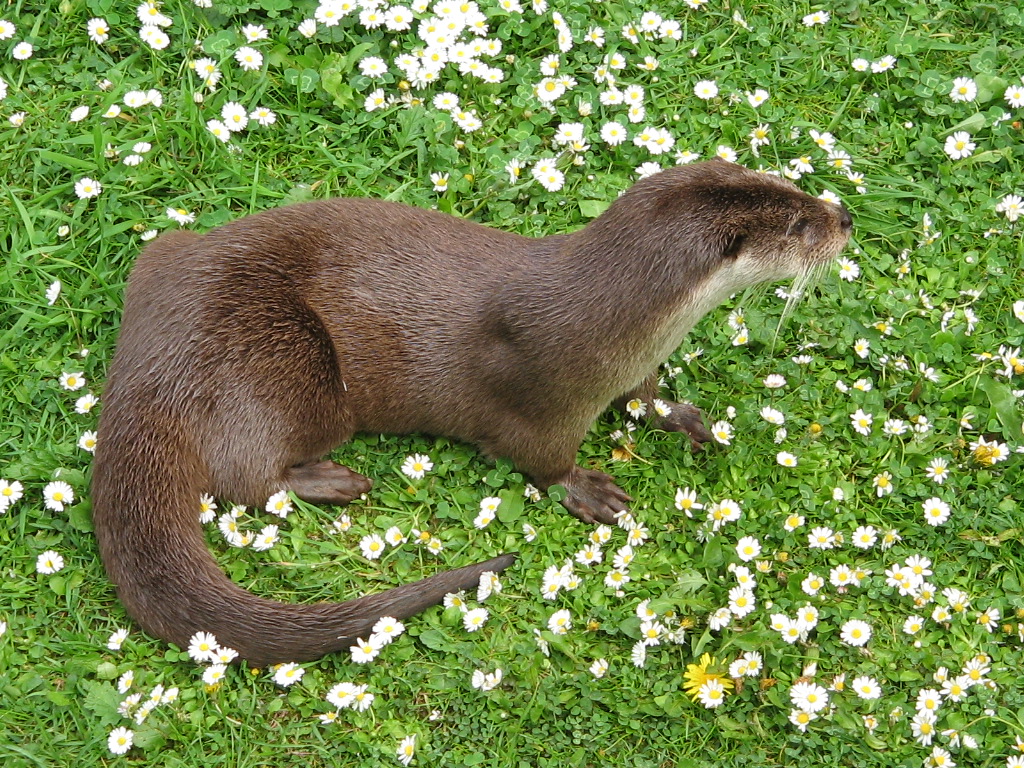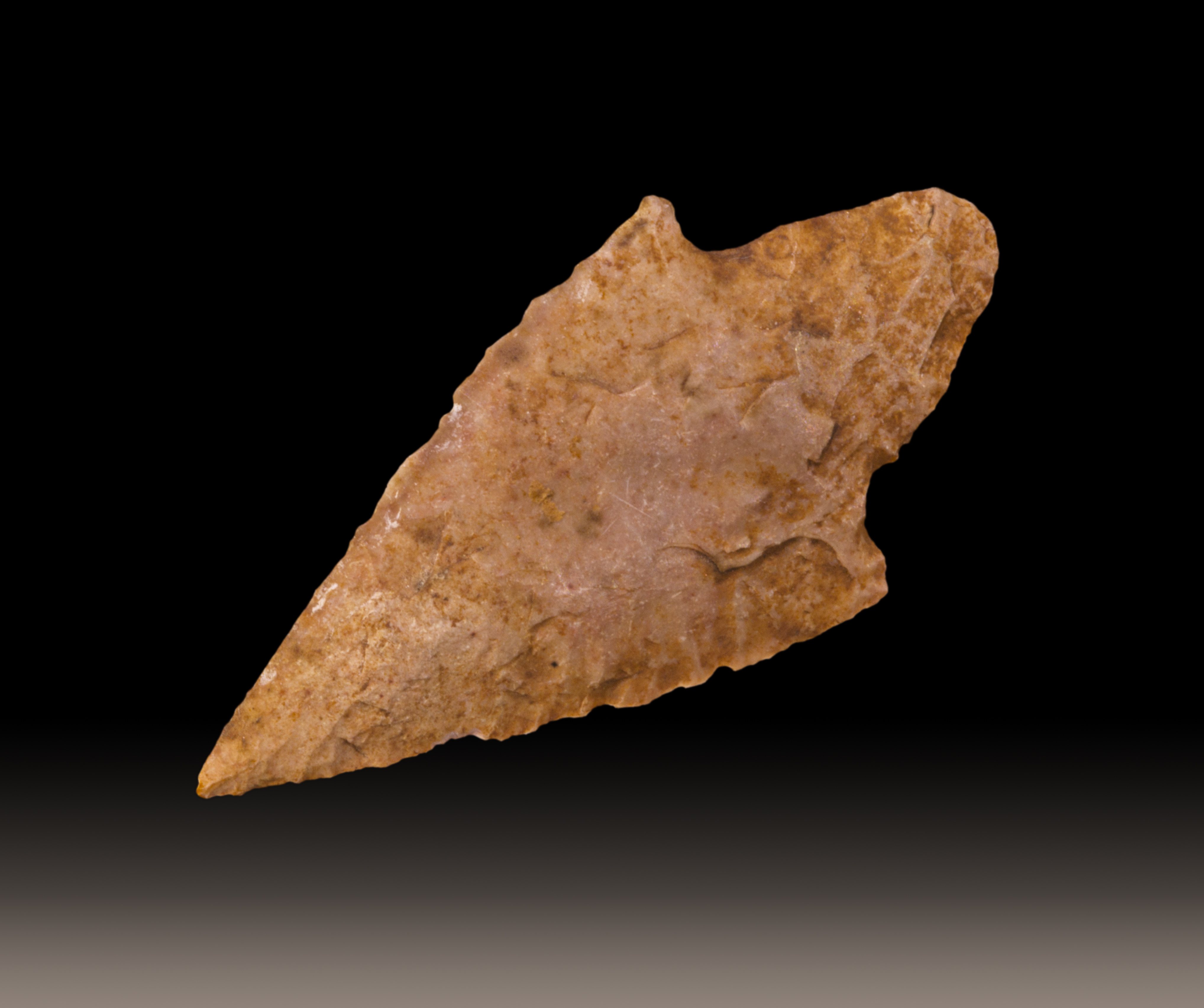|
Iemisch
The Iemisch (a.k.a. ''Iemisch Listai'') is a supposed monster from Patagonia, specifically in the mountains near the Lake Colhué region. First attested to by Florentino Ameghino in 1897, a full study on the creature was published in the 1955 book ''On the Track of Unknown Animals''. From the original letter: During follow-up research by Bernard Heuvelmans, the local population described the iemisch as a mixture of a jaguar and otter, though by some accounts it was as big as an ox. He claimed the creature was also referred to as a ''tigre d'acqua'', similar to the ahuizotl. It reportedly could move as quickly on land as in the water, and was described as having a "''soul-wrenching scream''". Robert Lehmann-Nitsche, a German anthropologist working in Argentina, claimed to have a sample of the iemisch's skin given to him by a local rancher. He stated that there were small bone plates embedded in its skin, which protected the creature from arrowheads. The rancher reported that ... [...More Info...] [...Related Items...] OR: [Wikipedia] [Google] [Baidu] |
Patagonia
Patagonia () is a geographical region that includes parts of Argentina and Chile at the southern end of South America. The region includes the southern section of the Andes mountain chain with lakes, fjords, temperate rainforests, and glaciers in the west and Patagonian Desert, deserts, Plateaus, tablelands, and steppes to the east. Patagonia is bounded by the Pacific Ocean on the west, the Atlantic Ocean to the east, and many bodies of water that connect them, such as the Strait of Magellan, the Beagle Channel, and the Drake Passage to the south. The northern limit of the region is not precisely defined; the Colorado River, Argentina, Colorado and Barrancas River, Barrancas rivers, which run from the Andes to the Atlantic, are commonly considered the northern limit of Argentine Patagonia. The archipelago of Tierra del Fuego is sometimes considered part of Patagonia. Most geographers and historians locate the northern limit of Chilean Patagonia at Huincul Fault, in Araucanía R ... [...More Info...] [...Related Items...] OR: [Wikipedia] [Google] [Baidu] |
Lake Musters And Lake Colhué Huapí
Lake Musters and Lake Colhué Huapi (, at altitudes of around ) form the terminal stage of the Senguerr River endorheic basin, located in the patagonia, patagonic central region of Argentina in the south of Chubut Province, Chubut province. Closest populated area is Sarmiento, Chubut, Sarmiento, an 8,000 inhabitant former Welsh immigrant colony. The lakes gave their names to the Mustersan and Colhuehuapian South American land mammal ages. Description Inflow The basin lakes are fed mainly by the eastward running Senguerr river which begins its journey in the glacial lakes :es:Lago La Plata, La Plata and :es:Lago Fontana, Fontana in the Andes. The inflow ranges from 35 to 54 m3/sec and varies seasonally and yearly greatly. Outflow Both lakes have naturally a high evaporation process in the dry Patagonian environment by means of strong winds action and solar radiation. In shallow Colhué Huapi evaporation is much increased. In past decades, when excessive inflows did take ... [...More Info...] [...Related Items...] OR: [Wikipedia] [Google] [Baidu] |
Florentino Ameghino
Florentino Ameghino (born Giovanni Battista Fiorino Giuseppe Ameghino; September 19, 1853 – August 6, 1911) was an Argentine naturalist, paleontologist, anthropologist and zoologist, whose fossil discoveries on the Argentine Pampas, especially on Patagonia, rank with those made in the western United States during the late 19th century. Along with his two brothers – Carlos and Juan – Florentino Ameghino was one of the most important founding figures in South American paleontology. From 1887 until his death, Ameghino was passionately devoted to the study of fossil mammals from Patagonia, with the valuable support of his brother Carlos Ameghino (1865–1936) who, between 1887 and 1902, made 14 trips to that region, where he discovered and collected numerous fossil faunas and made important stratigraphic observations. Biography Ameghino was born on September 19, 1853, in Tessi, an hamlet of Moneglia, a municipality of Liguria in Italy, in what was then the Kingdom of Sardi ... [...More Info...] [...Related Items...] OR: [Wikipedia] [Google] [Baidu] |
On The Track Of Unknown Animals
''On the Track of Unknown Animals'' is a cryptozoological book by the Belgian- French zoologist Bernard Heuvelmans that was first published in 1955 under the title ''Sur la Piste des Bêtes Ignorées''. The English translation by Richard Garnett was published in 1958 with some updating by the author and with a foreword by Gerald Durrell. A revised and abridged edition was published in 1965, and a further edition in 1995. It is credited with introducing the term cryptozoologyGeorge Gaylord Simpson, ''Proceedings of the American Philosophical Society'', Vol. 128, No. 1 (March 30, 1984), pp1-19 "Mammals and Cryptozoology" and established its author as the "Father of Cryptozoology."Peter Dendle ''Folklore'' Vol 117, No. 2 (2006), pp 190-206 "Cryptozoology in the Medieval and Modern Worlds" Subject As one reviewer explained, it is a book "about animals that ''might'' exist."D. Johnson ''Science New Series'', Vol. 130, No. 3384 (Nov. 6, 1959), pp. 1245-1246 (book review) ''On the Trac ... [...More Info...] [...Related Items...] OR: [Wikipedia] [Google] [Baidu] |
University Of Pennsylvania Press
The University of Pennsylvania Press, also known as Penn Press, is a university press affiliated with the University of Pennsylvania, an Ivy League university in Philadelphia, Pennsylvania. History The press was originally incorporated with by the Pennsylvania state government on March 26, 1890, and the imprint of the University of Pennsylvania Press first appeared on publications in the 1890s, among the earliest such imprints in America. One of the press's first book publications, published in 1899, was The Philadelphia Negro, ''The Philadelphia Negro: A Social Study'', written by black reformer, scholar, and social critic W. E. B. Du Bois. University of Pennsylvania Press has an active backlist of roughly 2,000 titles and an annual output of upward of 120 new books in a focused editorial program. It focuses heavily on publishing works related to American history and culture, ancient, medieval, and Renaissance studies, anthropology, landscape architecture, studio arts, human ... [...More Info...] [...Related Items...] OR: [Wikipedia] [Google] [Baidu] |
Bernard Heuvelmans
Bernard Heuvelmans (10 October 1916 – 22 August 2001) was a Demographics of Belgium, Belgian-France, French scientist, explorer, researcher, and writer probably best known, along with Scottish-American biologist Ivan T. Sanderson, as a founding figure in the pseudoscience and subculture of cryptozoology. His 1958 book ''On the Track of Unknown Animals'' (originally published in French in 1955 as ''Sur la Piste des Bêtes Ignorées'') is often regarded as one of the most influential cryptozoology texts. Life Heuvelmans was born on 10 October 1916 in Le Havre, France, and raised in Belgium and earned a doctorate in zoology from the Free University of Brussels (1834–1969), Free University of Brussels (now split into the Université libre de Bruxelles and the Vrije Universiteit Brussel). Heuvelmans was a pupil of Serge Frechkop, a proponent of the Theory of Initial Bipedalism. In 1939, his doctoral dissertation concerned the teeth of the aardvark. During World War II he had es ... [...More Info...] [...Related Items...] OR: [Wikipedia] [Google] [Baidu] |
Jaguar
The jaguar (''Panthera onca'') is a large felidae, cat species and the only extant taxon, living member of the genus ''Panthera'' that is native to the Americas. With a body length of up to and a weight of up to , it is the biggest cat species in the Americas and the List of largest cats, third largest in the world. Its distinctively marked Animal coat, coat features pale yellow to tan colored fur covered by spots that transition to Rosette (zoology), rosettes on the sides, although a melanistic black coat appears in some individuals. The jaguar's powerful bite allows it to pierce the Turtle shell#Carapace, carapaces of turtles and tortoises, and to employ an unusual killing method: it bites directly through the skull of mammalian prey between the ears to deliver a fatal blow to the brain. The modern jaguar's ancestors probably entered the Americas from Eurasia during the Early Pleistocene via the land bridge that once spanned the Bering Strait. Today, the jaguar's range ex ... [...More Info...] [...Related Items...] OR: [Wikipedia] [Google] [Baidu] |
Otter
Otters are carnivorous mammals in the subfamily Lutrinae. The 13 extant otter species are all semiaquatic, aquatic, or marine. Lutrinae is a branch of the Mustelidae family, which includes weasels, badgers, mink, and wolverines, among other animals. Otters' habitats include dens known as holts or couches, with their social structure described by terms such as dogs or boars for males, bitches or sows for females, and pups or cubs for offspring. Groups of otters can be referred to as a bevy, family, lodge, romp, or raft when in water, indicating their social and playful characteristics. Otters are known for their distinct feces, termed spraints, which can vary in smell from freshly mown hay to putrefied fish. Otters exhibit a varied life cycle with a gestation period of about 60–86 days, and offspring typically stay with their family for a year. They can live up to 16 years, with their diet mainly consisting of fish and sometimes frogs, birds, or shellfish, depending ... [...More Info...] [...Related Items...] OR: [Wikipedia] [Google] [Baidu] |
Ahuizotl (mythology)
The ahuizotl (from the for "spiny aquatic thing", a.k.a. "water dog") is a legendary creature in Aztec mythology. It is said to lure people to their deaths. The creature was taken as an emblem by the Ahuitzotl, ruler of the same name, and was said to be a "friend of the rain gods". The ahuizotl is most likely a water opossum, which possesses dexterous hands "like a raccoon's or a monkey's", as well as a prehensile tail (the hand most likely represents this prehensile nature), waterproof marbled black and grey fur, and small pointed ears. The conquistador Hernán Cortés once reported to the King of Castile that one of his men had been killed by an ahuizotl. The name of the Mexican Revolution, revolutionary anti-porfirist periodical ''El Hijo del Ahuizote'' (The Son of the Ahuizote) is in reference to the ahuízotl. Appearance The creature is described as being the size of a small dog, with waterproof fur. Its name comes from the propensity of its fur to spike when it leaves ... [...More Info...] [...Related Items...] OR: [Wikipedia] [Google] [Baidu] |
Robert Lehmann-Nitsche
Robert Lehmann‑Nitsche (November 9, 1872 in Radomierz – April 9, 1938 in Berlin) was a German anthropologist who spent thirty years in Argentina as director of the Anthropological Section of the La Plata Museum and professor at the University of Buenos Aires. He became an authority on indigenous people in Argentina and concluded his academic career at the Friedrich Wilhelm University in Berlin. After his death, he was accused of racism and having used research methods disrespectful of the rights of native Argentinians. Biography Lehmann‑Nitsche was born in what was then called Radomitz in a well-off family of farmers. He studied at the University of Freiburg and at Friedrich Wilhelm University in Berlin, and earned his doctorate in Philosophy in 1894 at Ludwig Maximilian University of Munich. In the same university, he earned a second doctorate, in Medicine, in 1897. In the same year 1897, he moved to Buenos Aires, having accepted an offer to direct the Anthropological Se ... [...More Info...] [...Related Items...] OR: [Wikipedia] [Google] [Baidu] |
Arrowhead
An arrowhead or point is the usually sharpened and hardened tip of an arrow, which contributes a majority of the projectile mass and is responsible for impacting and penetrating a target, or sometimes for special purposes such as signaling. The earliest arrowheads were made of stone and of organic materials; as human civilizations progressed, other alloy materials were used. Arrowheads are important archaeological artifacts; they are a subclass of projectile points. Modern enthusiasts still "produce over one million brand-new spear and arrow points per year". A craftsman who manufactures arrowheads is called an arrowsmith. History In the Stone Age, people used sharpened bone, flintknapped stones, flakes, and chips and bits of rock as weapons and tools. Such items remained in use throughout human civilization, with new materials used as time passed. As archaeological artifacts such objects are classed as projectile points, without specifying whether they were ... [...More Info...] [...Related Items...] OR: [Wikipedia] [Google] [Baidu] |
Santiago Roth
Santiago Roth (14 June 1850 – 4 August 1924) was a Swiss Argentine paleontologist and academic known for his fossil collections and Patagonian expeditions. Life Kaspar Jakob (Spanish: Santiago) was born and raised in Herisau, Canton Appenzell Ausserrhoden, Switzerland, as the oldest of 12 children. He attended school in the nearby town of St. Gallen, where his teacher Bernhard Wartmann raised his interest in the science of nature. Wartmann was a well known botanist and director of the Museum of History of Nature in St. Gallen.Weigelt, Gertrud: ''Santiago Roth 1850-1924. Ein Berner als wissenschaftlicher Pionier in Südamerika'', Berner Zeitschrift für Geschichte und Heimatkunde, Paul Haupt Bern, 1951/1, pp. 19–39 For economic reasons the Roth family emigrated to Argentina in 1866, where they initially settled in the Colonia Baradero (Buenos Aires Province). There, Roth started a small business with leather goods. In his spare time he collected plants, butterflies and r ... [...More Info...] [...Related Items...] OR: [Wikipedia] [Google] [Baidu] |





